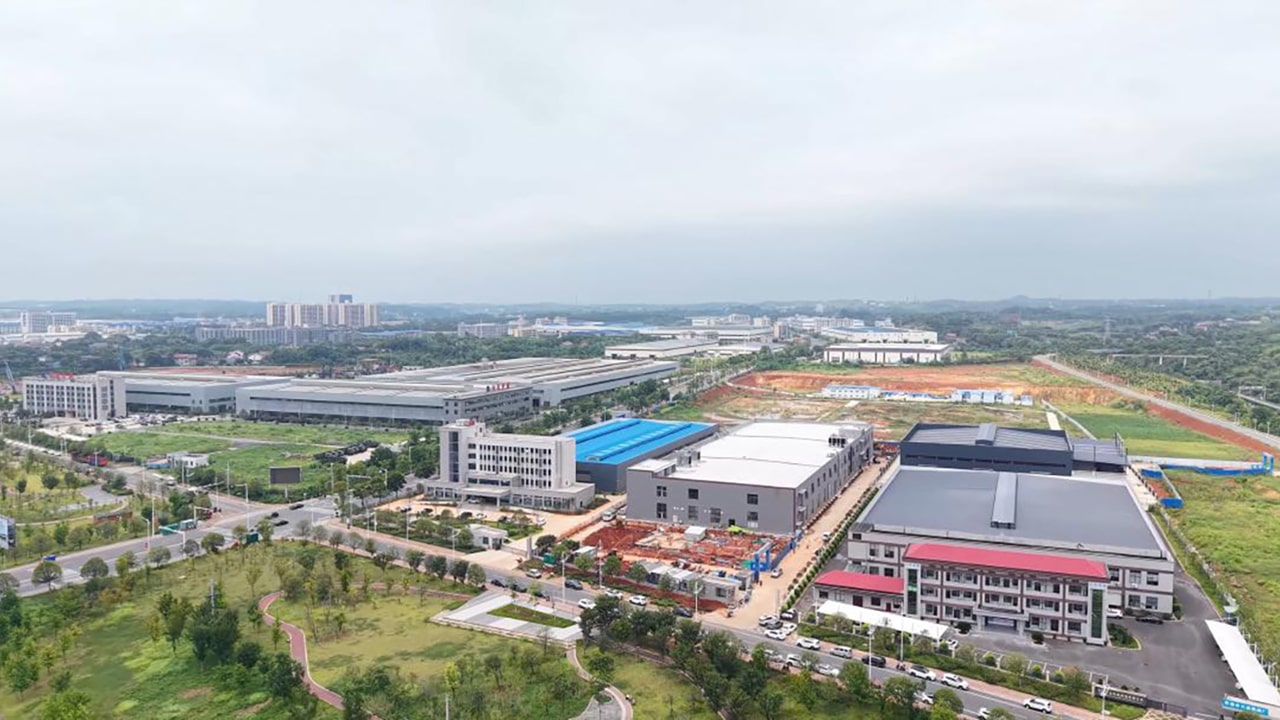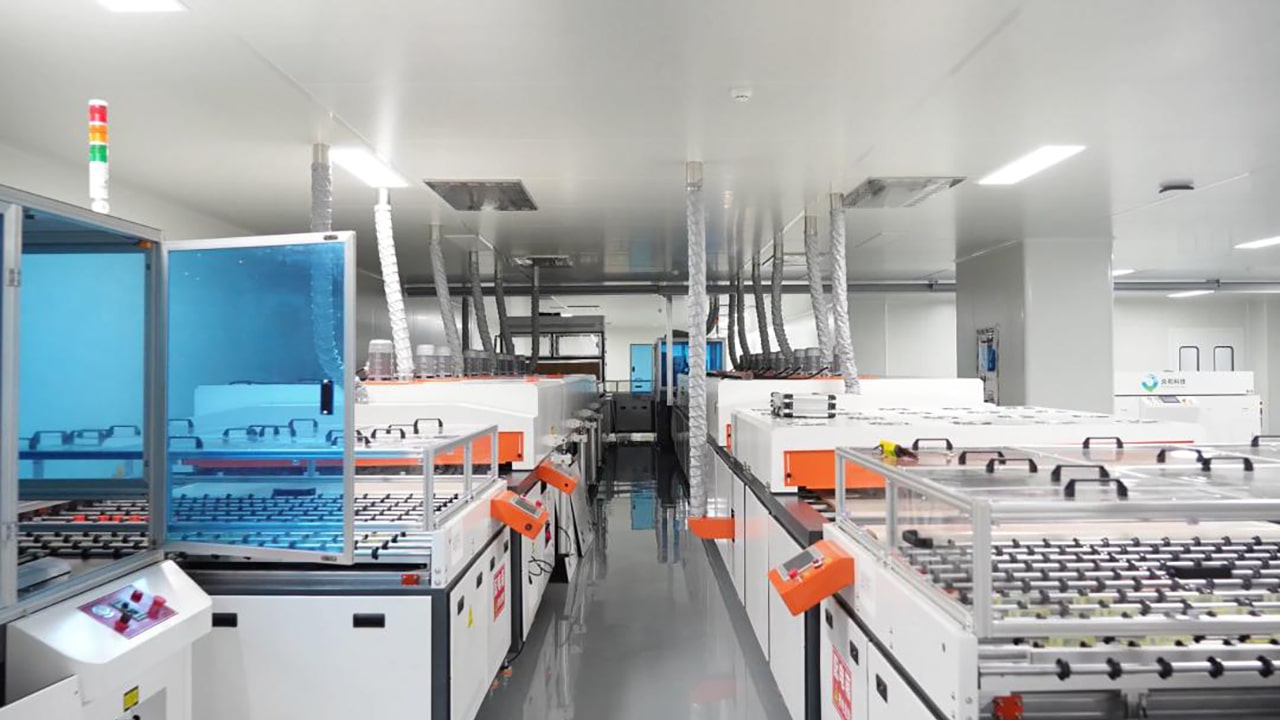Yanhe Solar, a perovskite solar cell manufacturer based in Hunan, has completed a Series A funding round, raising over RMB 100 million (USD 14 million). The round was led by Orient Jiafu Asset Management, with participation from Empyrean Venture, Xingxiang Investment Holding Group, CASVC, and Morning Spring Venture. Existing investor Caixin Capital Investment also joined the round, while Lingxiao Capital and Six Sigma Capital served as financial advisors. The proceeds will be used to build mass production lines for perovskite solar cells and expand the company’s global market presence.
Founded in February 2024, Yanhe’s team includes researchers from Peking University and Columbia University. The company focuses on developing and manufacturing perovskite solar cell modules and related production equipment, aiming to improve their stability, photoelectric conversion efficiency, and cost-effectiveness. Its products target multiple sectors, including consumer electronics, smart wearables, smart home devices, portable energy storage, automotive photovoltaics, and building-integrated photovoltaics.
In August, Yanhe completed and commissioned a fully automated 100-megawatt production line in Changde, Hunan, marking its transition from laboratory development to mass production. According to the company, it has already signed partnerships with several well-known brands in Asia, North America, and Europe.

Breaking through the commercialization barrier
Photoelectric conversion efficiency is the key metric that determines the potential and competitiveness of photovoltaic technology. Under identical area and lighting conditions, higher efficiency translates into greater power output. Traditional crystalline silicon materials have a theoretical efficiency limit of about 29.4%, while perovskite materials can reach up to 33%. This advantage has made perovskite one of the most promising third-generation photovoltaic materials.
Beyond efficiency, perovskite’s flexibility and bendability allow solar cells to be integrated directly into product designs—as part of a surface, screen, or casing—enabling devices to generate power autonomously. Its ability to operate in low-light conditions further extends usage time and application scenarios, opening opportunities for consumer-level products.
“We positioned ourselves from the start as a maker of consumer-grade photovoltaic products,” said Feng Fan, CEO of Yanhe Solar. “While the overall size of the 3C electronics and energy storage markets may not match that of utility-scale solar, opportunities for new technologies usually arise in vertical or niche segments. As the internet-of-things expands and artificial intelligence adoption increases power consumption, demand for energy-efficient consumer devices and storage products will continue to rise, creating room for perovskites to grow.”
Yanhe’s strategy focuses on developing passive power products that enhance user convenience. The company’s solutions primarily target three sectors: smart homes, smart wearables, and 3C (computer, communication, and consumer) electronics.
In smart homes, its technologies are applied in products such as smart locks, temperature and humidity sensors, remote controllers, and curtain control systems. For example, Yanhe is co-developing a perovskite-powered smart lock with an undisclosed brand. The lock can reportedly charge from ambient light and, under artificial lighting, recharge within seconds when power is low.
In smart wearables, the company’s technology is being used in AI-enabled devices such as smartwatches, smart glasses, and smart rings. A prototype of perovskite-powered AI glasses under co-development could extend battery life from six to ten hours, improving performance for outdoor and sports use.
In 3C electronics, Yanhe’s solar modules are being integrated into keyboards, mice, and electronic shelf labels, replacing batteries with light energy. This transition enhances durability and portability while reducing maintenance and replacement costs.
According to Feng, demand for such applications has long existed, but earlier technologies failed to meet performance and scalability requirements. Amorphous silicon, for example, remains widely used but suffers from low efficiency, prompting customer complaints and driving up production costs through circuit compensation. Emerging technologies such as organic photovoltaics and dye-sensitized solar cells have achieved promising lab results but struggle with yield and cost efficiency at scale. “Many customers want to use them but simply can’t afford or procure them,” Feng said.
To bridge this gap, Yanhe has prioritized factory construction and production line commissioning. Its approach emphasizes demonstrating capability through tangible output to build trust and reduce market hesitation toward new technology.

Expanding globally
Perovskite industrialization has accelerated this year, with leading firms scaling from megawatt to gigawatt capacity in a short span. In August, Yanhe’s Changde production line began full operations, capable of continuous 24-hour production. The company said it completed integration of the entire line within 23 days of startup.
“This line is one of the world’s few automated facilities built specifically for consumer-grade perovskite,” Feng said. “We’ve stabilized the yield rate at about 90%, and we’re working toward 98%. Our cost-performance ratio already surpasses traditional amorphous silicon, which is why customers choose us. They can afford it, and it performs well.”
As competition intensifies, Yanhe aims to position itself as a manufacturing service provider, believing that technological innovation must ultimately translate into scalable, market-ready products. This focus offers three advantages: deep expertise in consumer-grade product development, close collaboration with core clients to co-develop technologies and avoid R&D detours, and strong industrial synergies in Changde that accelerate learning and resource accumulation.
Investors such as Chaoxi Capital recognized early the potential of new-generation photovoltaic modules and backed Yanhe’s roadmap, Feng said. The company’s ability to earn the trust of both investors and customers, he added, has enabled it to reinforce its consumer strategy and sharpen its competitive edge through rapid iteration. “Our moat is shaped by customer pull and production capability, and it manifests in the production line, in design, in our technical innovations, and in how customers choose us.”
Yanhe’s current order book totals in the tens of millions of RMB. The company is now delivering products such as pet trackers, smoke detectors, and solar-powered remote controls co-developed with leading clients in the smart home and 3C segments. Some new prototypes are expected to launch next year, with deliveries to follow.
Technologically, Yanhe’s current products mainly adopt single-junction architectures with lifespans that could extend beyond ten years. The rigid single-junction version targets indoor applications, while the flexible version, due to its lightweight design, supports use cases such as balcony photovoltaics and portable energy packs. The company is also working with universities and leading firms to explore tandem perovskite technologies and plans to build a pilot demonstration plant within the next three to five years.
Yanhe’s near-term goal is to steadily increase production capacity and enhance delivery reliability. Next year, it plans to expand internationally with new subsidiaries in Europe and North America to connect overseas clients with its domestic supply base. An automated flexible production line with a capacity of 500 MW is scheduled to come online next year, alongside expanded consumer-grade production facilities, further scaling its operations and revenue.
KrASIA Connection features translated and adapted content that was originally published by 36Kr. This article was written by Zhang Bingbing for 36Kr.
